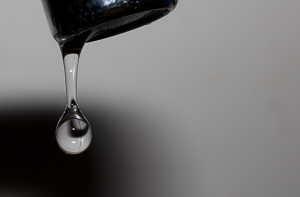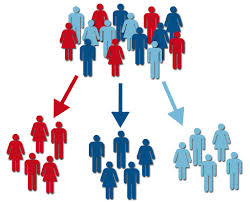Keeping prospects engaged…drip by drip
Drip campaigns are one of the most effective and popular new ways for businesses to engage and interact with consumers. And thanks to the rapid emergence of affordable, lightweight marketing automation solutions, the floodgates have opened for businesses of all sizes to to deploy new and exciting marketing tactics like drip campaigns – something that’s been traditionally out of their reach in the past.
At Boingnet, we use the broad term “Drip Marketing” to define the overall practice of sending regular marketing messages in an effort to remain relevant with users while building brand awareness and viability. At a more granular level, we divide the umbrella term “Drip Marketing” into two distinctive tactics: Campaigns Drips and Drip Nurturing.
Campaign Drips enable businesses to improve the reach of their email campaigns by releasing regularly scheduled email blasts, with pre-determined follow-up emails based on the recipients’ behavior. Typically, in a campaign drip, you are reaching out to a prospect who has yet to engage with your company or your content. Drip Nurturing, on the other hand, is kicked off after a user takes an action with your company (downloads research, a free trial, or submits a request for information). In a Drip Nurturing scenario, the messaging flow is individualized based upon the initial action that the user took.
For the purposes of this blog, we will focus on Campaign Drips. Check back soon for more on Drip Nurturing.
Why Should Businesses Use Campaign Drips?
The purpose of a campaign drip is to increase the number of people interacting with content. The process begins with a simple email send. As each user opens, clicks, and interacts with the content, the drip engine continually segments the email list, dropping each user into a new bucket based on the action they took, specifically whether or not they clicked or opened. After automatically creating new segmentations based on these actions, the drip campaign continues to attempt to engage with each prospect via a series of varying follow-up emails. These emails are typically scheduled over a long period of time and sent automatically.
The power of a campaign drip lies in segmentation. As each campaign progresses, each prospect is continually updated, profiled, and dropped into a new segment based on each individual action they take. This is great for marketers because it automatically generates a series of ultra-targeted segments that lets them tailor all future emails based on these actions.
It’s important to understand that just because a prospect may not open your first email, that doesn’t mean they are completely uninterested in what you have to offer. For example, many prospects don’t open emails simply because they are sent at the wrong time of day, or maybe the subject line just isn’t all that interesting. And of those who do open the email, many do not click because the content is not applicable to them, or perhaps there was no urgency in the call to action.
Campaign Drips help marketers make up for these poor send times and subject lines, giving them a second chance to make a first impression. For example, when the second round of emails goes out, the non-openers might receive an email at a different time or day and with a different subject line. And the openers who did not click will receive a different offer, or one with a greater sense of urgency to drive the user to take action.
Campaign Drips are a convenient way to continually provide marketing content to prospects – and they don’t typically require too much additional work. Marketers can change content presentation without changing the content itself, and engage more effectively with a higher percentage of leads.
Do Campaign Drips Work?
Some businesses that do not deploy drip campaigns worry that sending multiple emails on the same topic will increase unsubscribe rates. But drip campaigns focus on engaging people who miss, and therefore have not opened any previous emails. In fact, most marketers now agree that the drip process ultimately helps improve a campaign’s reach. But let’s not take their word for it. Let’s look at the research. According to our most recent data, campaign drips can eventually double your initial open rate, and increase unique clicks by more than 75%.
Another interesting piece of data is that more than half of all campaign drips unsubscribes come through after the initial blast, with numbers getting smaller and smaller as the campaign progresses.
[Tweet “Campaign drips can double your initial open rate & increase unique clicks by more than 75% #emailmarketing”]
Use Case – Restaurant
Let’s take a look at a potential way that drip campaigns can be used.
A restaurant is hosting a world-renowned chef for the weekend, and attempting to book reservations in advance. Now, we already know how effective marketing automation software is for restaurants (check out this blog for more on that), but drip campaigns can help them achieve their goals even faster and in a more efficient manner.
To get the most from a campaign drip, the restaurant would employ a measured process. First, they would send an email to all of the restaurant’s contacts; let’s say it’s on a Monday morning about two weeks before the event. This email would contain a WebForm and a catchy description of the event. Optimistically, let’s say that 40% of people open the email and 10% complete the form. The next step is to initiate a campaign drip.
First, the restaurant sends a new email to everyone on the list who did not open the email. They change the subject line, plan the send for a different day/time, and re-adjust the content. According to our experience, the restaurant would be able to entice an additional 24% to open and 5% to click simply by sending a second email in a different fashion. Their numbers would get even better as the drip continues.
As the event date approaches, the restaurant would then send out one last set of campaign drips. This time, everyone gets an email. Those who successfully completed the WebForm get a confirmation/reminder email. All contacts that failed to complete the form get a final promotional email that outlined the urgency to act now with phrases such as “Last Chance”, which usually helps convince uncommitted customers into taking action.
By sending a series of emails (instead of relying on a single outreach), the restaurant drastically improves their influence and reach. More prospects read their emails, more people make reservations, and the celebrity chef is impressed by the turnout.
When the event ends, these leads can be further nurtured on an individual basis by the restaurant using Drip Nurturing. In this scenario, messaging can be tweaked and tailored to meet each user’s individual needs, tastes, and behaviors.
Stay tuned for more on “Drip Nurturing” in an upcoming blog post and webinar with Boingnet CEO Dennis Kelly.

